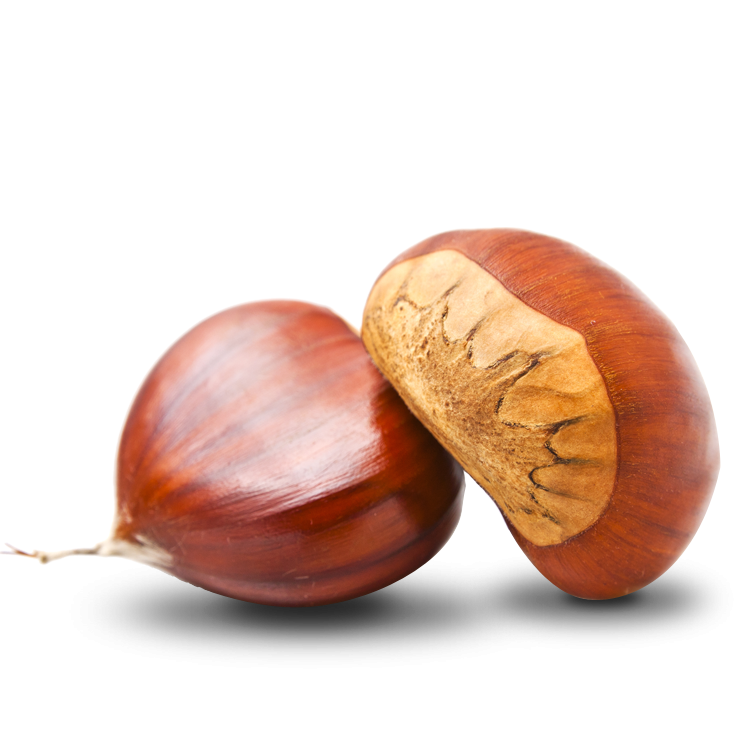Chestnuts

The fruit is contained in a spiny (very sharp) cupule 5–11 cm in diameter, also called "bur" or "burr". The burrs are often paired or clustered on the branch and contain one to seven nuts according to the different species, varieties, and cultivars. Around the time the fruits reach maturity, the burrs turn yellow-brown and split open in two or four sections. They can remain on the tree longer than they hold the fruit, but more often achieve complete opening and release the fruits only after having fallen on the ground; opening is partly due to soil humidity. The chestnut fruit has a pointed end with a small tuft at its tip (called "flame" in Italian), and at the other end, a hilum – a pale brown attachment scar. In many varieties, the fruit is flattened on one or two sides. It has two skins. The first one is a hard, shiny, brown outer hull or husk, called the pericarpus; the industry calls this the "peel". Underneath the pericarpus is another, thinner skin, called the pellicle or episperm. The pellicle closely adheres to the seed itself, following the grooves usually present at the surface of the fruit. These grooves are of variable sizes and depths according to the species and variety.